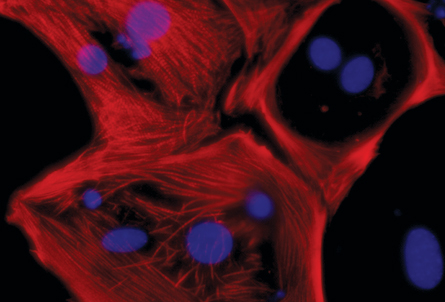- More than 2 years ago
Skin cells can be converted directly into beating heart cells, a new study shows.

The transformation occurs with a little help from cellular reprogramming factors that are usually used to make embryonic-like stem cells, scientists from the Scripps Research Institute and the University of California, San Diego report online January 30 in Nature Cell Biology.
Instead of taking mouse skin cells all the way back to a stem cell state and then coaxing the cells to form heart tissue, the researchers switched the cells directly from skin to heart cells. The team briefly introduced the reprogramming factors and then gave the skin cells a bath in chemicals that induce heart development.
Other researchers have converted skin cells directly into nerve cells (SN: 2/27/10, p. 5), and previous studies have worked out ways to grow heart cells from embryonic-like stem cells. But the new process is faster. It took only 11 days to make beating cells with the new protocol, whereas it could take weeks to convert skin cells to an embryonic-like state and then more time to develop those cells into heart cells.
Direct reprogramming may be used to grow new hearts for transplant from a patient’s own skin or to help repair damage after heart attacks. Scientists also want to use such cells to learn how some genetic defects affect development of the heart and other organs.






